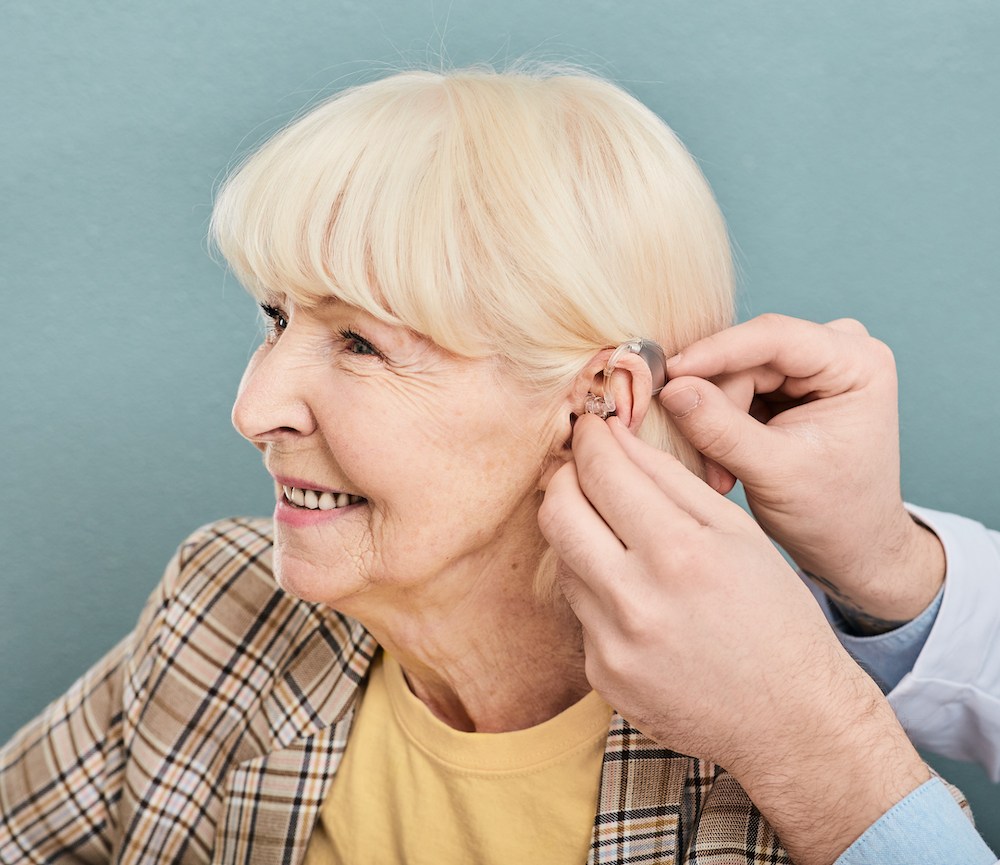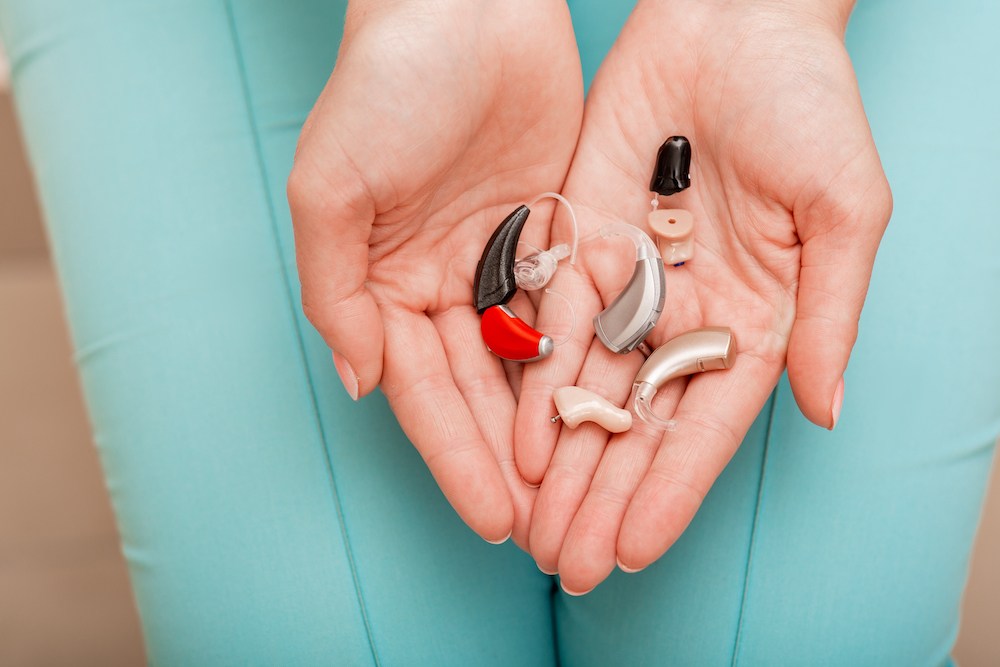Hearing Aids for Musicians: Specialized Features
Musicians depend on accurate hearing to notice fine details in pitch,

By: admin | March 21, 2025
As winter winds down, its lingering effects still pose risks to your hearing aids. Those final weeks with fluctuating temperatures, melting snow and surprise storms create perfect conditions for moisture damage to these sensitive electronic devices. When you depend on hearing aids for daily communication, protecting them becomes especially important during this transitional season.
The end of winter brings unique moisture challenges that can affect hearing aid performance. Walking through slushy streets, experiencing late-season fog or rain and simply moving between cold outdoor air and heated indoor spaces can introduce damaging moisture. Even high indoor humidity from heating systems can threaten these precision instruments that keep you connected to the world around you.
Good hearing aid function matters every day – it helps you chat with neighbors, hear important announcements and stay aware of your surroundings. Taking simple steps to protect your devices from winter’s moisture threats ensures you maintain clear communication as seasons change.
Every hearing aid is made up of three main parts: a microphone, an amplifier and a speaker, but these devices also contain several other components that contribute to their function and durability. The microphone captures sounds from your surroundings, converting them into electrical signals. The amplifier processes and boosts these signals to a level that suits your hearing needs. Finally, the speaker delivers the enhanced sounds into your ear, allowing you to hear more clearly. Each of these parts plays a crucial role, and any disruption – such as moisture exposure or debris buildup – can impact overall performance.
Beyond these core components, hearing aids include other essential features that help them function properly:
Winter moisture can often go unnoticed, but it can have a big impact on your hearing aids. Moisture build-up can lead to various issues, affecting both their functionality and lifespan. Here are some key facts to remember:
Winter often brings an increase in dampness, particularly in certain climates. This can have a big impact on your hearing aids. Dampness, like excessive moisture, can cause condensation within your devices. This is especially true when moving from a cold outdoor environment to a warm indoor setting. The sudden change in temperature can cause water droplets to form within your hearing aids, which isn’t good for the delicate electronic components inside them. Over time, these conditions could lead to corrosion or damage, affecting both the sound quality and lifespan of your devices.
Recognizing the signs of moisture damage in your hearing aids is also important. Changes in sound quality or inconsistent performance might indicate that moisture has gotten into your devices. Here are some signs to watch out for:
When temperatures drop outside, we naturally turn up the heat indoors. However, this increase in indoor heating can indirectly affect your hearing aids. Indoor heating systems warm up the air inside our homes, reducing the relative humidity of the air and making it drier than usual. As we’ve learned, dry air can lead to an increase in condensation within your hearing aids, potentially harming their electronic components over time.
While indoor heating keeps us comfortable during chilly winter days and nights, it can create an environment that’s not so great for our hearing aids. This delicate balance between maintaining a cozy home temperature and ensuring optimal performance of your devices needs careful attention during winters.
First, think about investing in a dehumidifier specifically designed for hearing aids. This device can help reduce moisture build-up in your devices when you’re not using them. Also, make it a routine to wipe down your hearing aids with a dry cloth before storing them away.
Next, try to avoid sudden temperature changes as much as possible. If you’ve been out in the cold, give your devices some time to adjust to room temperature before turning them on. This simple step can prevent condensation within your hearing aids.
Taking care of your hearing aids is vital for ensuring they function optimally and last longer. By incorporating these protective measures into your daily routine at home, you’re setting yourself up for success in maintaining these valuable tools for better hearing.
Going outdoors for activities is a great way to stay active and enjoy nature. However, it can pose a challenge for those with hearing aids, as exposure to elements like wind and rain can potentially harm the devices. A simple yet effective solution is to use protective gear such as hearing aid covers or sweatbands that shield your devices from harsh weather conditions.
Outdoor activities often mean exposure to varying temperatures, which can cause condensation within your hearing aids. This not only affects the sound quality but could also lead to long-term damage of the electronic components inside. By using protective covers or avoiding sudden temperature changes, you can ensure that your hearing aids are well-protected during your outdoor adventures.
Cleaning your hearing aids becomes even more important during winter. The cold season often brings with it a host of challenges for these devices – from increased indoor heating leading to dry air, to the dampness associated with colder climates. These factors can result in an increase in moisture accumulation within your hearing aids, potentially affecting their performance and longevity.
Regular cleaning helps keep this moisture at bay, ensuring that your devices continue to function optimally. It also prevents the buildup of earwax or debris which could further contribute to moisture-related issues. By keeping up with a routine cleaning schedule during winter months, you’re taking a proactive step towards protecting your hearing aids and enhancing their lifespan.
Moisture can be a persistent problem, especially in the winter months, but there are ways to combat it effectively.
One simple method is to open the battery compartment of your hearing aids overnight. This allows air to circulate through the device and can help dry out any moisture that has accumulated during the day.
For more thorough drying, consider using a hearing aid dehumidifier. These devices are designed specifically to remove moisture from hearing aids and can be a very helpful tool in maintaining their functionality and extending their lifespan.
Here are some essential tools that can help you combat moisture in your hearing aids effectively:
Despite your best efforts at home, there might be times when your hearing aids show persistent signs of moisture-related issues. These could range from distorted sounds, inconsistent performance or a noticeable decrease in battery life.
Early detection and intervention can prevent further damage and prolong the life of your devices. So, if you observe any irregularities in your hearing aids’ functioning that might indicate moisture damage, don’t hesitate to reach out to an audiologist. They can accurately assess the situation and provide appropriate solutions.
Hearing aids are an essential part of daily life, and keeping them in top condition means staying ahead of seasonal challenges. As winter fades, the mix of lingering moisture, shifting temperatures and indoor humidity can still impact their performance. Being mindful of these factors and taking small protective measures can help prevent damage and keep your hearing clear.
A little maintenance goes a long way in extending the life of your hearing aids. Storing them properly, using drying kits and keeping them clean ensures they continue to function reliably. If you have any concerns about moisture exposure or need help with upkeep and repairs, George Iwanow Hearing Aid Centers is here to assist. Just give us a call at one of our convenient offices:
Taking steps to protect your hearing aids is an investment in your quality of life. So, give us a call today and let’s ensure those devices keep connecting you with the world of sounds all year round!

Musicians depend on accurate hearing to notice fine details in pitch,
By: admin | November 18, 2025

Your hearing aids are built to withstand daily use and keep up with your
By: admin | September 24, 2025

When hearing becomes challenging, the give-and-take of family life shifts
By: admin | May 23, 2025
